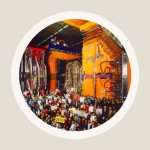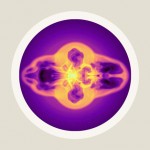Dictionary
Friedmann-Lemaître-Robertson-Walker universe
The simplest assumptions one can make about a universe are that it is homogeneous and isotropic. Homogeneity means that the properties of matter and of the geometry of spacetime are the same at every point in space. Isotropy means that all spatial directions are on the same footing, and that to a hypothetical observer, such a universe looks exactly the same, in whatever direction he or she might be looking. These assumptions are quite restrictive; in fact, it is possible to write down an expression characterizing the spacetime geometry of all homogeneous and isotropic solutions of Einstein’s equations. The result is a family of spacetimes known as Friedmann-Lemaître-Robertson-Walker universes. Typically, these universes are either in a state of expansion or a state of collapse. The best-known example is the expanding universe described by big bang cosmology.
Sometimes, these model universes are also referred to as Friedmann-Lemaître universes, Robertson-Walker universes or Friedmann-Robertson-Walker universes.










